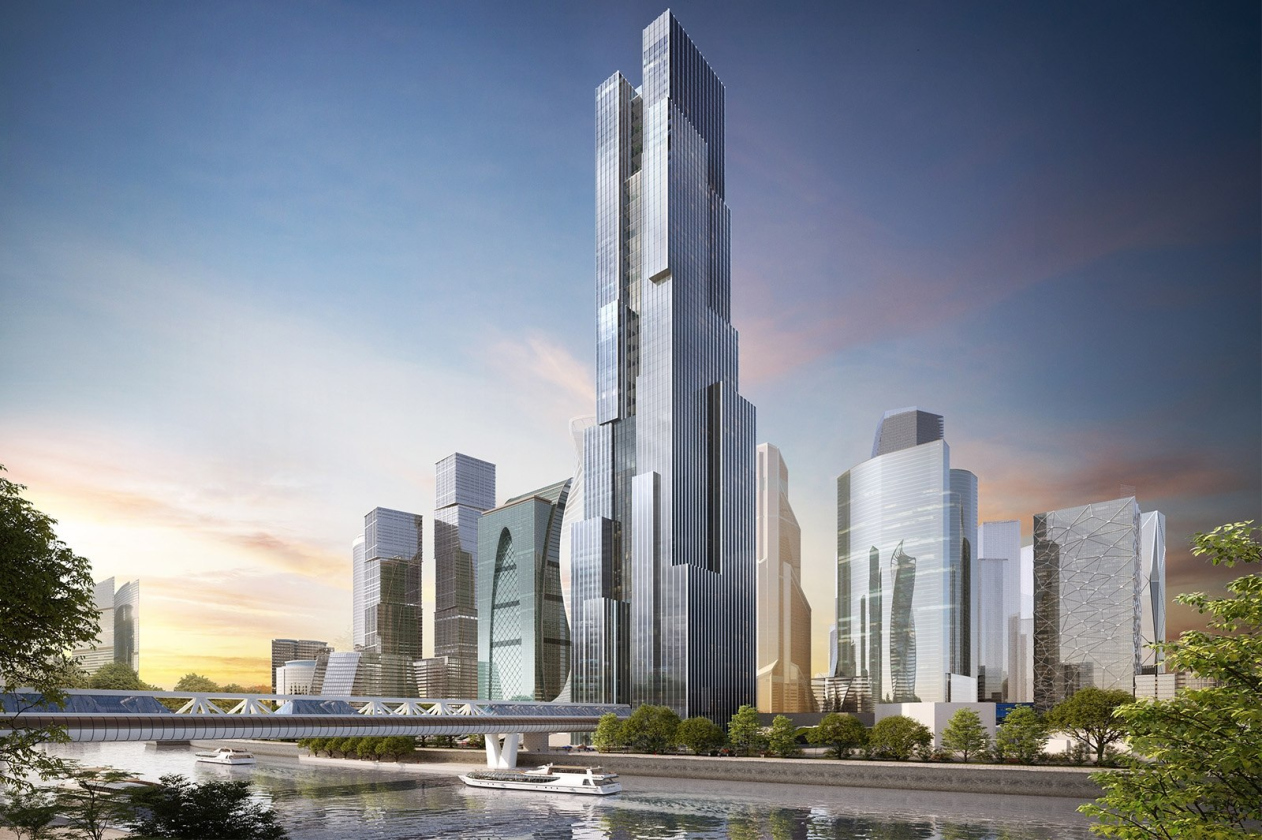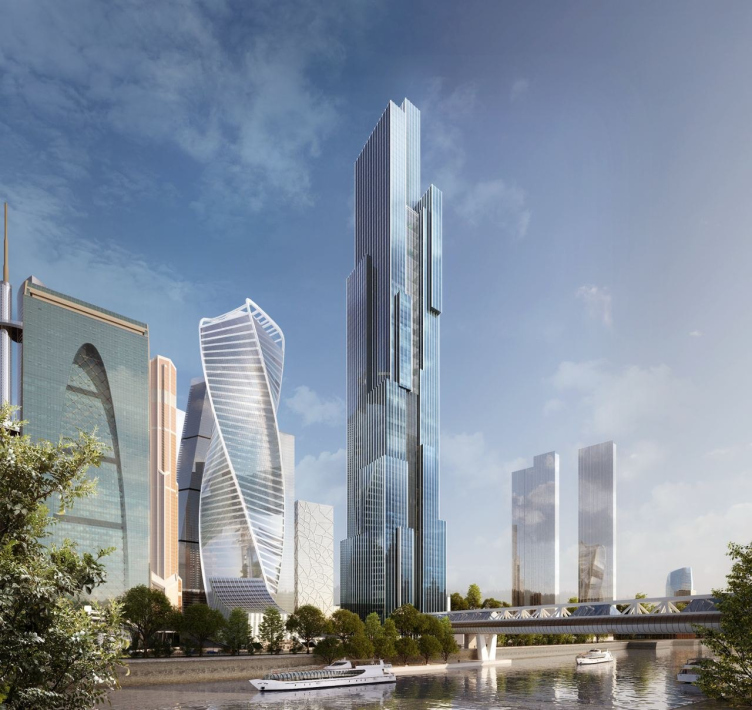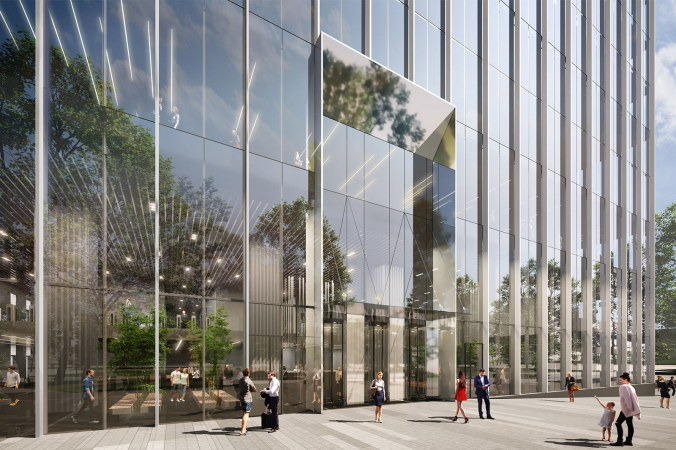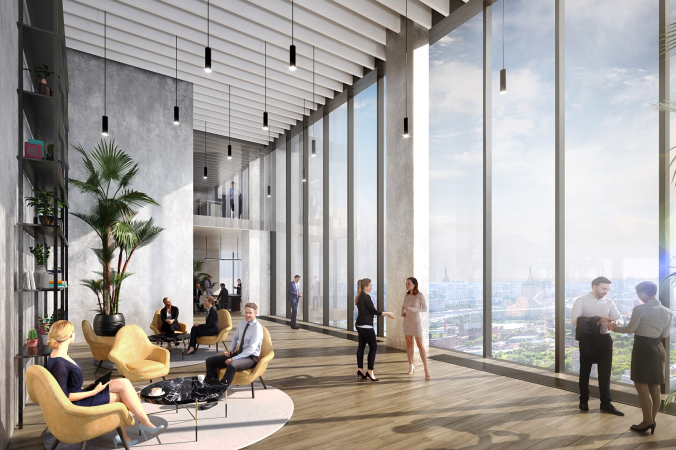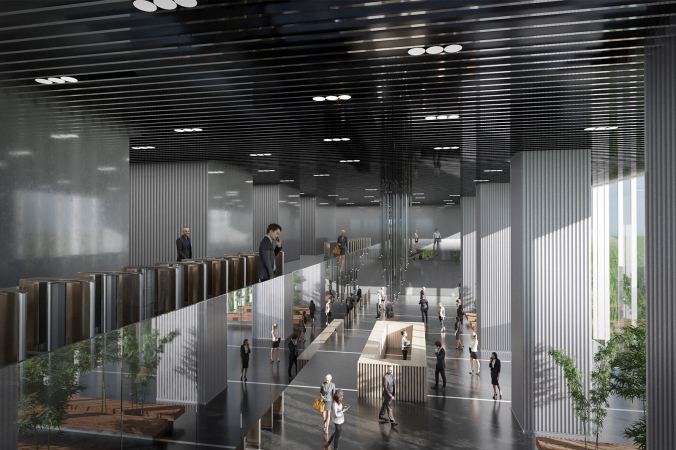The largest of them – an office tower standing next to the Bagration Bridge – was designed by the architectural company SPEECH. Its height, according to the developer, is “almost 400 meters”, which is making this skyscraper, when it is actually built, the tallest office building in Moscow.
The office skyscraper near the Bagration Bridge. Moscow City. Project, 2022
Copyright: © SPEECH
Here we need to emphasize that the new tower, judging by the announcement, will be dominated by office typology, while the other tallest skyscrapers in the Moscow City complex chiefly have a mixed function, combining apartments, business floors, and public/commercial property.
Speaking about height, currently, the tallest building of the Moscow City complex is the Vostok unit of the Federation Tower, designed by Sergey Tchoban and Peter Schweiger in 2002-2004 and built by 2015, its height being 373.7 meters. For a while, the Federation was indeed the tallest building in Russia and Europe too, then, after the Lakhta Center in St. Petersburg (462m) was completed, it dropped down to second place. Speaking of the already-complete towers of the City, the next-tallest will be the southern part of the complex, OKI (354,2m, designed by the US architectural company SOM), and Neva Towers, also designed by SPEECH (345m, SPEECH, HOK, FXFOWLE). The last agreed version of the height of One Tower, which is being built on Site 1 upon the project by Sergey Skuratov, is 444 meters.
The new 400-meter tower will be built next to the northwest end of the Bagration Bridge, symmetrical to Tower 2000, the first tower of the City, built, just as the bridge, by the project of Boris Thor – the author of the original concept of the Moscow International Business Center – in 1996-2001.
If the new project is to be implemented, the Bagration Bridge will end up being flanked by two “entrance” towers, on the left and right banks of the river. It is also reported that Gals’ 400-meter office tower will become the city’s last skyscraper integrated in its underground retail and transport infrastructure. In other words, from the tower we will be able to make it to the bridge, to the Moscow metro, to the Afimall shopping center, and, via the underpasses, to the stylobates of the other towers.
The office skyscraper near the Bagration Bridge. Moscow City. Project, 2022
Copyright: © SPEECH
The form of the tower is based upon “suprematist” slabs – it resembles the architectons of Malevich, and at the same time echoes the nearby “City of Capitals” by NBBJ, which inherited the idea of rotation of the glass tiers from the Erick van Egeraat project.
Just as much are the facades of the 400-meter tower next to the Bagration Bridge are related to the two other projects by SPEECH: Neva Towers (2012-2019) and the in-construction ZILArt Tower (2020-). First of all, this similarity is felt because of the fact that the glass surfaces are organized with the help of vertical lamellas, light and slender, which became the basis for the imagery solution. Meanwhile, if we compare the Bagration Tower with these two projects, it demonstrates a more dynamic plastique solution. However, it keeps the organization of the form along the central axis, which is this case coincides with the axis of the bridge, and somewhat pyramid character – which, for all intents and purposes, refers to the classic Moscow high-rises, at least two of which will be there in the same panorama with the Bagration Tower, if we are to look at it from the Dorogomilovsky Bridge of the Third Transport Ring.
On the whole, an impression is created that the architects, finding in their previous works an integral image of a pyramidal high-rise, crossed with allusions to the Chicago architecture and a modern – technical and laconic – approach to a glass skyscraper, use their new projects as a “proving ground” for “deconstruction” of the form that they found. Thus, the project logically fits into a whole series of SPEECH works of the recent five years or so.
Other interesting features include an elegant and simple metallic portal with polished chamfers and the prevalence of thin striped “strokes” in the interiors. The building has 80 floors, the approximate height of the floor is about 5 meters. The construction is planned to be completed in 2030.

